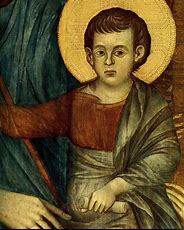Filarete between utopia
and reality
Antonio di Pietro Averlino, called Filarete(1400-1469)(Fig.1), this is lover of
virtue, nickname that he has adopted during old age has been an architect and
sculptor that written a treaty and he has imagined the build of a city,
Sforzinda(Fig.2), name from his costumer, Ludovico Sforza. During lecture of this book, written between 1460 and 1464, they can find moments very realest as payment to workers with spending and
number of workers, materials as lime, stones and measure of these, then
Filarete think the utopic city but he must consider that reality; I think that
this consideration he have took from both lectures, as Vitruvius and De
Architectura of Leon Battista Alberti, and his personal experience. The
costumer begins a dialogue to Filarete and he told very much steps, and
reactions of workers. In fact we read a step, very daily: “In the evening and
time for leave work…and so everybody gone to accommodations. And we
accomplished the lord to his accommodation, and there he said to me that he
want that I stay there and he want that had dinner, and he asked very much
thing”, this episode we can think that is true and Filarete has dinner with
him, but it is pure fantasy, but it is necessary to continue tell and this
book. But we must consider that other times Filarete or other has had dinner
with somebody, then Filarete has took from his memory and he has considered
some dinner, and has told an episode that he has lived but with others persons,
then this treaty is a document of architecture certainly, but also life during
15th century; hierarchy of worksite, that he has mentioned almost
during read of this treaty, and some episode that hasn’t inherence to worksite,
but all is necessary to us to understand what was life during these works, a social
document.
Alessandro Lusana






